SAD No More
Anybody around here suffer from SAD besides me? I used to love the onset of Winter with all the holidays and the brisk weather. Over the years, though, that changed. Slowly and imperceptibly, I began to dread the dark, short days. The plans I made would become simply that — plans without any final resolution. Winter became hibernation; no doubt my family thought me related to the bears…shall we say I was a tad grouchy?
Here’s an explanation of the problem:
Seasonal Affective Disorder is a depression that afflicts people primarily during the winter months, and is often referred to as seasonal depression. Seasonal Affective Disorder was discovered in the early eighties by the National Institute of Health. The NIH estimates that over 36 million Americans suffer depressive symptoms brought on by the winter months. Seasonal Affective Disorder causes you to feel down, gloomy, and lose energy. You may have difficulty concentrating and feeling alert, withdraw socially and have carbohydrate cravings. Seasonal Affective Disorder sufferers also experience sleep problems.
Seasonal Affective Disorder vs. Winter Blues
Although often confused with the ‘winter blues,’ Seasonal Affective Disorder and Winter Blues are not the same. Seasonal Affective Disorder is manifested by symptoms of clinical depression, with impaired social interaction and cognitive ability. On the other hand, Winter Blues is milder than SAD and is typified by the lack of energy and feeling sad or down. If you have the winter blues, you can still function. If you have Seasonal Affective Disorder, normal daily functions are difficult to perform. Although Seasonal Affective Disorder and Winter Blues differ in the degree of severity, the treatment is the same for both conditions.
What causes Seasonal Affective Disorder?
Researchers agree that the lack of sunlight in the fall and winter causes the effects of seasonal depression. Without sunlight, the brain doesn't produce enough serotonin, which results in the symptoms of depression. The darker days also signal the brain to overproduce the hibernation hormone, melatonin. The symptoms diminish as the days get longer, although many Seasonal Affective Disorder sufferers note brief (1-2 week) periods of SAD-like symptoms in the summer.
This year I decided to change that. After a month of dilly-dallying, I sat down and ordered a sun box. One place has a circadian rhythm assessment. Hah. Mine is almost a flat line reading.
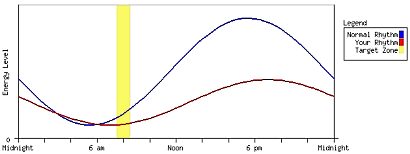
According to your test results, you have Circadian Amplitude Disorder (CAD). CAD means your body clock may be producing lower amounts of the night/day hormones during the day. This can cause Seasonal Affective Disorder (SAD), insomnia and other depressive mood disorders. If you have CAD, you may not have problems waking up or going to sleep, but the quality of the wakefulness and/or sleep is diminished. This means you'll probably have less energy during the day.
Duh. The suggested treatment time was 30 minutes at 8:00 am but when I finally got the device, it recommended starting with 15 minutes if you’re fair-skinned. Which I am — given my Celtic genes, the sun has never been my friend.
This light is bright. Whoo wee! But no UV rays so I don’t have to worry about that part. 10,000 Lux, whatever that means beyond bright as the dickens. The point is to have enough light reaching the retina, so while I may read, I have to glance up occasionally to let those rays bounce off my eyes. Hey, any excuse to sit down and read…
 I got my light box at Apollo, though I’m sure any of the other places would do as well. Just google “light box” and you’ll be inundated.
I got my light box at Apollo, though I’m sure any of the other places would do as well. Just google “light box” and you’ll be inundated.So far, so good. I’ve quit crying in my beer, for one thing. They tell you to “avoid caffeine” which I figure means you shouldn’t look at the coffee while you’re drinking it. One thing is for sure: no sunbox is going to cure lack-of-coffee.
This is supposed to take a week or so to really set in. I’ll have to check with the Baron to see if he can tell.
To be continued…
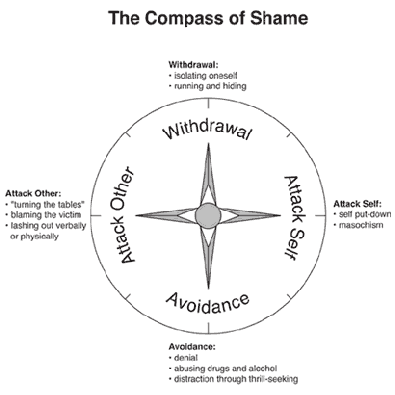

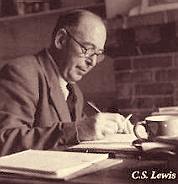

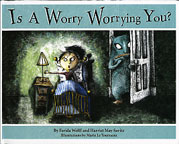 On my Watcher's Rounds the other day, I stopped by to read Varifrank's nominated post. He's always a pleasure to read, an excellent essayist with an easy, fluid style.
On my Watcher's Rounds the other day, I stopped by to read Varifrank's nominated post. He's always a pleasure to read, an excellent essayist with an easy, fluid style.  The lovely wood pears finally ripened. We had a long, long period without frost --it's just about to come to an end -- so they had lots of time on the tree. Wood pears are very high and you have to… eek!… climb ladders to get them. The Baron hauled our ladder down the drive way and climbed high to knock them to the ground. By now the surrounding trees have mostly shed their leaves (though the wood pear leaves are still quite green, even now) so they made soft landings for much of the fruit.
The lovely wood pears finally ripened. We had a long, long period without frost --it's just about to come to an end -- so they had lots of time on the tree. Wood pears are very high and you have to… eek!… climb ladders to get them. The Baron hauled our ladder down the drive way and climbed high to knock them to the ground. By now the surrounding trees have mostly shed their leaves (though the wood pear leaves are still quite green, even now) so they made soft landings for much of the fruit.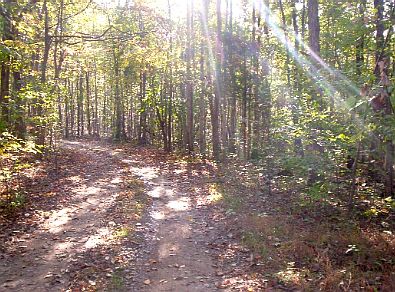
 This is our oldest veteran, but I didn't get his name. I will have to ask Martha, who knows every nook and cranny of the county, and is sure to know his name, his kin and what church he goes to. And how he got his medal.
This is our oldest veteran, but I didn't get his name. I will have to ask Martha, who knows every nook and cranny of the county, and is sure to know his name, his kin and what church he goes to. And how he got his medal.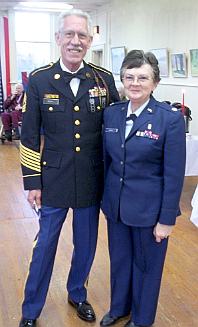 Her name is Dottie, I do remember that because we talked for awhile before I realized they were together. As you can see from this, and from the following picture, he cuts a dashing figure.
Her name is Dottie, I do remember that because we talked for awhile before I realized they were together. As you can see from this, and from the following picture, he cuts a dashing figure.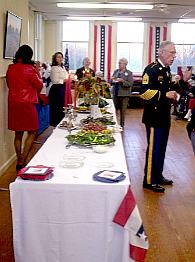 This time, she had been there the week before overseeing the painting of the walls, then re-hanging the Baron's paintings in time for the reception, and then going off to work for eight hours at the Medical Center. The woman with her back to the camera, Denise, did yeoman’s work at the food table. Later we talked about her adolescent daughter and how she worries about getting her through this age alive and not pregnant. Single parenthood is soooo hard. I think she's doing a good job, though. Her child loped around the room, awkward and out of place with all these fogies, but she smiled. And the only metal on her face were her braces. Denise will do fine.
This time, she had been there the week before overseeing the painting of the walls, then re-hanging the Baron's paintings in time for the reception, and then going off to work for eight hours at the Medical Center. The woman with her back to the camera, Denise, did yeoman’s work at the food table. Later we talked about her adolescent daughter and how she worries about getting her through this age alive and not pregnant. Single parenthood is soooo hard. I think she's doing a good job, though. Her child loped around the room, awkward and out of place with all these fogies, but she smiled. And the only metal on her face were her braces. Denise will do fine. 




